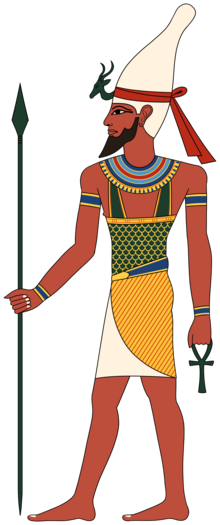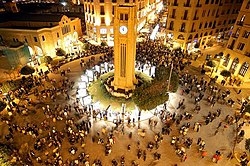Portal:Phoenicia/Sandbox
https://en.wikipedia.org/wiki/Portal:Phoenicia/Sandbox
THE PHOENICIA PORTAL

Phoenicia (/fəˈnɪʃə, fəˈniːʃə/), or Phœnicia, was an ancient Semitic thalassocratic civilization originating in the coastal strip of the Levant region of the eastern Mediterranean, primarily located in modern Lebanon. The territory of the Phoenicians expanded and contracted throughout history, with the core of their culture stretching from Arwad in modern Syria to Mount Carmel in modern Israel covering the entire coast of modern Lebanon. Beyond their homeland, the Phoenicians extended through trade and colonization throughout the Mediterranean, from Cyprus to the Iberian Peninsula.
The Phoenicians directly succeeded the Bronze Age Canaanites, continuing their cultural traditions following the decline of most major cultures in the Late Bronze Age collapse and into the Iron Age without interruption. It is believed that they self-identified as Canaanites and referred to their land as Canaan, indicating a continuous cultural and geographical association. The name Phoenicia is an ancient Greek exonym that did not correspond precisely to a cohesive culture or society as it would have been understood natively. Therefore, the division between Canaanites and Phoenicians around 1200 BC is regarded as a modern and artificial division.
The Phoenicians, known for their prowess in trade, seafaring and navigation, dominated commerce across classical antiquity and developed an expansive maritime trade network lasting over a millennium. This network facilitated cultural exchanges among major cradles of civilization like Greece, Egypt, and Mesopotamia. The Phoenicians established colonies and trading posts across the Mediterranean; Carthage, a settlement in northwest Africa, became a major civilization in its own right in the seventh century BC.
The Phoenicians were organized in city-states, similar to those of ancient Greece, of which the most notable were Tyre, Sidon, and Byblos. Each city-state was politically independent, and there is no evidence the Phoenicians viewed themselves as a single nationality. While most city-states were governed by some form of kingship, merchant families likely exercised influence through oligarchies. After reaching its zenith in the ninth century BC, the Phoenician civilization in the eastern Mediterranean gradually declined due to external influences and conquests. Yet, their presence persisted in the central and western Mediterranean until the destruction of Carthage in the mid-second century BC. — Read more about Phoenicia, its mythology and languagehttps://en.wikipedia.org/w/index.php?title=Portal:Phoenicia/Sandbox&action=edit
Read or find an article
The Readers' FAQ and our about page contain the most commonly sought information about Wikipedia.
For simple searches, there is a search box at the top of every page. Type what you are looking for in the box. Partial matches will appear in a dropdown list. Select any page in the list to go to that page. Or, select the magnifying glass "Go" button, or press ↵ Enter, to go to a full search result. For advanced searches, see Help:Searching.
There are other ways to browse and explore Wikipedia articles; many can be found at Wikipedia:Contents. Also see our disclaimer for cautions about Wikipedia's limitations.
Edit an article
Contributing is easy: see how to edit a page. For a quick summary on participating, see contributing to Wikipedia, and for a friendly tutorial, see our introduction. For a listing of introductions and tutorials by topic, see getting started. The Simplified Manual of Style and Cheatsheet can remind you of basic wiki markup.
Be bold in improving articles! When adding facts, please provide references so others may verify them. If you are affiliated with the article subject, please see our conflict of interest guideline.
The simple guide to vandalism cleanup can help you undo malicious edits.
If you're looking for places you can help out, the Task Center is the place to go, or check out what else is happening at the community portal. You can practice editing and experiment in a sandboxyour sandbox.
,
 Featured article
-
Featured article
-
This is a Featured article, which represents some of the best content on English Wikipedia..
The law school of Berytus (also known as the law school of Beirut) was a center for the study of Roman law in classical antiquity located in Berytus (modern-day Beirut, Lebanon). It flourished under the patronage of the Roman emperors and functioned as the Roman Empire's preeminent center of jurisprudence until its destruction in AD 551.
The law schools of the Roman Empire established organized repositories of imperial constitutions and institutionalized the study and practice of jurisprudence to relieve the busy imperial courts. The archiving of imperial constitutions facilitated the task of jurists in referring to legal precedents. The origins of the law school of Beirut are obscure, but probably it was under Augustus in the first century. The earliest written mention of the school dates to 238–239 AD, when its reputation had already been established. The school attracted young, affluent Roman citizens, and its professors made major contributions to the Codex of Justinian. The school achieved such wide recognition throughout the Empire that Beirut was known as the "Mother of Laws". Beirut was one of the few schools allowed to continue teaching jurisprudence when Byzantine emperor Justinian I shut down other provincial law schools. (Full article...) Good article
-
Good article
-
This is a Good article, an article that meets a core set of high editorial standards.

The Battle of Ibera, also known as the Battle of Dertosa, was fought in the spring of 215 BC on the south bank of the Ebro River near the town of Ibera and was part of the Second Punic War. A Roman army, under the command of the brothers Gnaeus and Publius Scipio, defeated a similarly sized Carthaginian army under Hasdrubal Barca. The Romans, under Gnaeus Scipio, had invaded Iberia in late 218 BC and established a foothold after winning the Battle of Cissa. This lodgement, on the north-east Iberian coast, between the Ebro and the Pyrenees, blocked the route of any reinforcements from Iberia for the army of Hannibal, who had invaded Italy from Iberia earlier in the year. Hasdrubal attempted to evict the Romans in 217 BC, but this ended in defeat when the Carthaginian naval contingent was mauled at the Battle of Ebro River.
Hasdrubal spent the rest of 217 BC and all of 216 BC subduing rebellious indigenous Iberian tribes, largely in the south. Under pressure from Carthage to reinforce Hannibal, and having been strongly reinforced, Hasdrubal marched north again in early 215 BC. Meanwhile, Scipio, who had also been reinforced, and joined by his brother Publius, had crossed the Ebro to besiege the Carthaginian-aligned town of Ibera. Hasdrubal approached and offered battle, which the Scipios accepted. Both armies were of similar sizes, about 25,000 men. When they clashed, the centre of Hasdrubal's army – which consisted of locally recruited Iberians – fled without fighting. The Roman legions pushed through the gap, turned to each side against the remaining Carthaginian infantry and enveloped them. Both sides are reported to have suffered heavy casualties; the Carthaginians' may have been very heavy. The Carthaginian camp was sacked, but Hasdrubal escaped with most of his cavalry. (Full article...)Selected Phoenician inscriptions and language articles -
The Baalshillem Temple Boy, or Ba'al Sillem Temple Boy, is a votive statue of a "temple boy" with a Phoenician inscription known as KAI 281. It was found along with a number of other votive statues of children near the canal in the Temple of Eshmun in 1963-64 by Maurice Dunand, and is currently in the National Museum of Beirut.
The base of the statue was found separately; as late as 1974 Everett Mullen wrote that: "Only the base of the inscription was found; it has a large cavity at the top where the image of the squatting child would be expected on analogy with the other images which were found alongside this inscription."
The inscription mentions four previously unknown names of Kings of Sidon, which correspond exactly with those from known Sidonian coins. The inscription has been translated as follows:
This (is the) statue that Baalshillem, son of King Ba'na, king of the Sidonians, son of King Abdamun, king of the Sidonians, son of King Baalshillem, king of the Sidonians, gave to his lord Eshmun at the YDLL spring. May he bless him.
The inscription is dated from the end of the 5th century BCE. Nothing else is known about the kings mentioned in the inscription.
According to Josette Elayi, the statue represents Abdashtart I, who was the son of Baalshillem II. The statue is 35cm high. (Full article...)Selected Phoenician mythology articles -

Resheph (also Reshef and many other variants, see below; Eblaite 𒀭𒊏𒊓𒀊, Rašap, Ugaritic: 𐎗𐎌𐎔, ršp, Egyptian ršpw, Phoenician: 𐤓𐤔𐤐, ršp, Hebrew: רֶשֶׁף Rešep̄) was a god associated with war and plague, originally worshiped in Ebla in the third millennium BCE. He was one of the main members of the local pantheon, and was worshiped in numerous hypostases, some of which were associated with other nearby settlements, such as Tunip. He was associated with the goddess Adamma, who was his spouse in Eblaite tradition. Eblaites considered him and the Mesopotamian god Nergal to be equivalents, most likely based on their shared role as war deities.
In the second millennium BCE, Resheph continued to be worshiped in various cities in Syria and beyond. He is best attested in texts from Ugarit, where he was one of the most popular deities. While well attested in ritual texts and theophoric names, he does not play a large role in Ugaritic mythology. An omen text describes him as the doorkeeper of the sun goddess, Shapash, and might identify him with the planet Mars. He was also venerated in Emar and other nearbly settlements, and appears in theophoric names as far east as Mari. The Hurrians also incorporated him into their pantheon under the name Iršappa, and considered him a god of commerce. Through their mediation, he also reached the Hittite Empire. He was also introduced to Egypt, possibly by the Hyksos, and achieved a degree of prominence there in the Ramesside period, with evidence of a domestic cult available from sites such as Deir el-Medina. The Egyptians regarded him as a warlike god, but he could also be invoked as a protective healer. He was associated with gazelles and horses, and in art appears as an armed deity armed with a bow, shield and arrows. (Full article...)General images
Categories
Related portals
Wikiproject
Other Wikimedia and Wikiportals
The following Wikimedia Foundation sister projects provide more on this subject:
-
Commons
Free media repository -
Wikibooks
Free textbooks and manuals -
Wikidata
Free knowledge base -
Wikinews
Free-content news -
Wikiquote
Collection of quotations -
Wikisource
Free-content library -
Wikiversity
Free learning tools -
Wikivoyage
Free travel guide -
Wiktionary
Dictionary and thesaurus
Parent portal: Lebanon













































